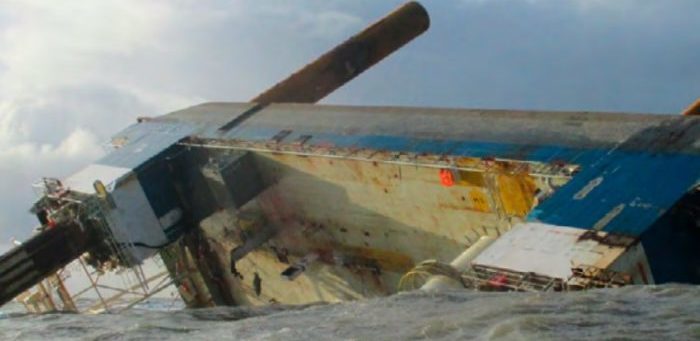The European Maritime Safety Authority released an annual overview of marine casualties and incidents reported by the EU Member States in European Marine Casualty Information Platform (EMCIP). The report reveals that during 2016 there were 106 reported fatalities, 957 persons injured, 26 ships lost and 123 investigations launched.

With 3145 marine casualties and incidents in 2016, the total number reported in EMCIP since its establishment has reached 16500.
Since 2014, the number of reported accidents seems to have stabilised at around 3200 occurrences per year. While the number of very serious and serious marine casualties and incidents remained at levels similar to previous years, a limited but continuing increase of less serious accidents reported was noted.
However, some underreporting of marine casualties and incidents appears still to exist, although there has been continuous improvement since the implementation of the relevant EU legislation in 2011. Estimates indicate that under-reporting relates mostly to the less serious casualties and incidents.

Highlights for the period 2011-2016
- Half of the casualties were of a navigational nature, such as contacts, grounding/stranding or collision.
- Amongst occupational accidents, 40% were attributed to slipping, stumbling and falling of persons.
- Human erroneous action represented 60% of accidental events and 71% of accidental events were linked to shipboard operations as a contributing factor.
- Of all casualties, 42% took place in port areas.
- The number of ships lost has reduced by 50% since 2014.
- EU States’ investigative bodies have launched 869 investigations and 695 reports have been published. Among the 1300 safety recommendations issued, 28% were related to operational practices, in particular safe working practices.
Cargo ships
In 2016, the number of cargo ships involved in marine casualties and incidents has decreased to 1400. A significant decrease of fatalities was noted in 2016, reaching the lowest level of 2012.
Fishing vessels
Despite a decrease in the number of fishing vessels lost in 2016, a significant increase of fatalities and injuries was noted.
Passenger Ships
Although during the period 2011 – 2016 the number of fatalities on board passenger ships is dominated by the Costa Concordia (32 fatalities and 17 injured persons in 2012) and the Norman Atlantic (11 fatalities and 31 injured persons in 2014), since 2014 a continuous decrease of fatalities and injuries is evident. A reduction of service ships lost was noted in 2016, as well as the number of fatalities and injuries.
Other ship types
Finally, for ships of other types, those indicators revealed an increase in 2016.

As it is reminded in the report, following the entry into force of Directive 2009/18/EC establishing the fundamental principles governing the investigation of accidents in the maritime transport sector, EU States shall, among other obligations:
- establish independent, impartial and permanent accident investigative bodies. Landlocked countries without a maritime fleet are not obliged to
comply with this provision, other than to designate a focal point. This is the case currently for the Czech Republic and Slovakia; - require to be notified of marine casualties and incidents. This obligation covers casualties and incidents that:
-involve ships flying the flag of one of the Member States;
-occur within Member States’ territorial seas and internal waters;
-involve other substantial interests of the Member States; - investigate casualties depending upon their severity. Casualties which are classified as very serious shall be investigated; serious casualties shall be assessed in order to decide whether or not to undertake a safety investigation;
- publish investigation reports; and
- notify the European Commission of marine casualties and incidents via EMCIP.
Explore more by reading the full report:































































